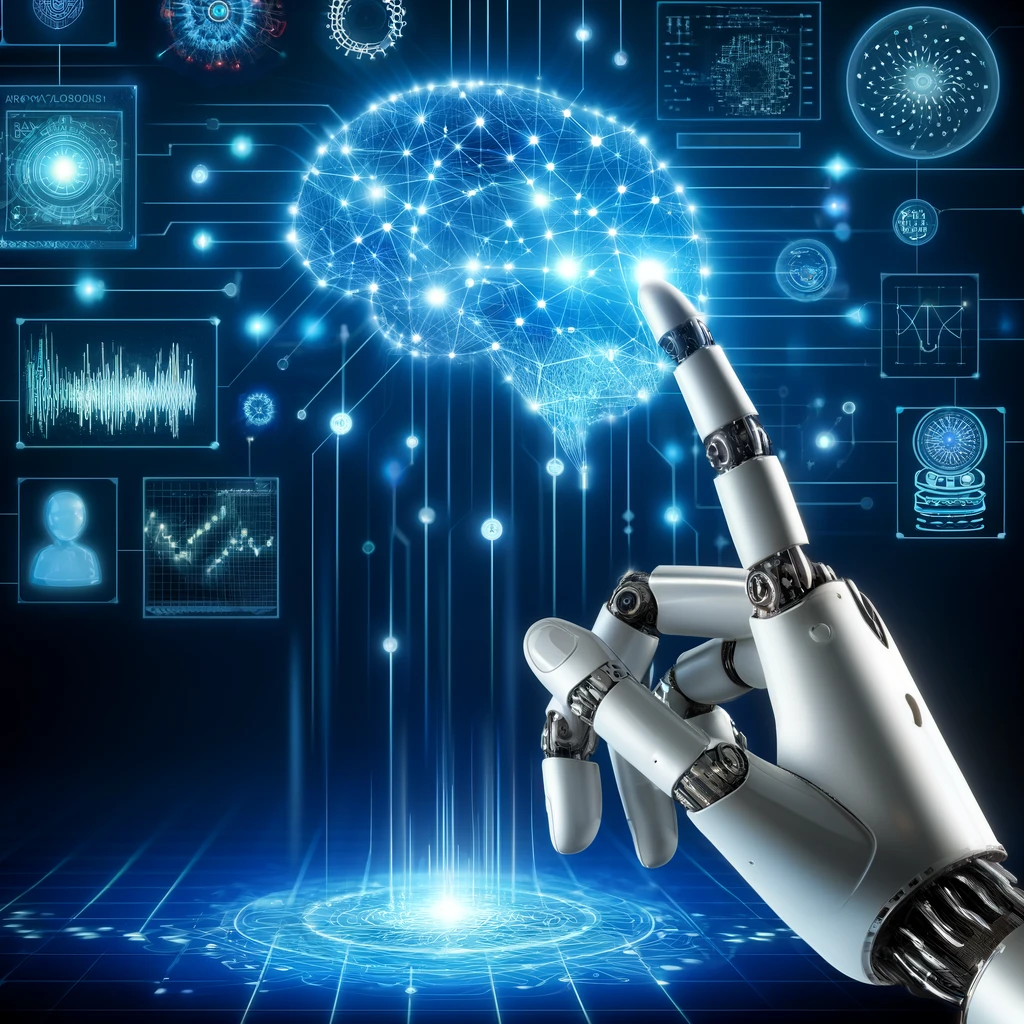What is Machine Learning?
Machine learning (ML) is a branch of artificial intelligence (AI) that enables computers to automatically learn from data and previous experiences in order to recognize patterns and predict future events with a minimum of human interaction.
The Workings of Machine Learning:
When a machine learning system gets new data, it forecasts the outcome using the prediction models it has built from prior data. The quantity of data used determines how well the output is anticipated, as a larger data set makes it easier to create a model that predicts the outcome more precisely.

Sorting machine learning into categories:
In machine learning, there are two types of approaches: unsupervised learning, which finds hidden patterns or structures in input data, and supervised learning, which trains a model on known input and output data to predict future outputs.
Supervised learning: Labeled data sets are used to train supervised machine learning models, allowing them to learn and become more accurate over time. As an illustration, an algorithm may be taught using images of dogs and other objects that have all been identified by humans, and the computer would then learn how to recognize images of dogs on its own. The most popular kind of machine learning nowadays is supervised learning. Two categories of algorithms may be used to further categorize supervised learning: Classification and Regression
Un-supervised learning: A program searches for patterns in unlabeled data in unsupervised machine learning. Unsupervised machine learning can identify patterns or trends that aren’t actively sought after. For instance, unsupervised machine learning software may examine online sales data and find various customer categories making purchases. Two kinds of algorithms may be used to further categorize unsupervised learning: Association and Clustering
Reinforcement learning: By setting up a reward system, reinforcement machine learning teaches computers via trial and error to choose the best action. By letting the machine know when it made the appropriate choices, reinforcement learning may teach models to play games or train autonomous cars to drive. Over time, the computer will understand what actions to take

Applications of ML: Let’s look at some more prevalent real-world machine learning applications.

Image recognition:
One of the most important and noteworthy machine learning and AI approaches is image recognition, which is a method for cataloguing and recognizing an item or feature in a digital image. For additional analysis, such as pattern recognition, face detection, and face recognition, this approach is being used.
Product recommendations:
Amazon, Netflix, and other e-commerce and entertainment businesses frequently utilize machine learning to propose products to users. Because of machine learning, if we look for a product on Amazon, we begin to see advertisements for the same product when using the same browser to explore the internet. Similar to this, machine learning is also used to propose TV shows, movies, and other entertainment options when we use Netflix.
Autonomous Vehicles:
Self-driving automobiles are one of the most intriguing uses of machine learning. Self-driving cars heavily rely on machine learning. The most well-known automaker, Tesla, is developing a self-driving vehicle. In order to train the automobile models to recognize people and objects while driving, unsupervised learning was used.
Sentiment Assessment:
One of the most essential uses of machine learning is sentiment analysis. A real-time machine learning application called sentiment analysis works to ascertain the sentiment or viewpoint of the speaker or writer. For instance, a sentiment analyzer will quickly determine the true intention and tone of a review or email (or any other type of document) that has been produced. This sentiment analysis tool may be used to examine decision-making apps, review-based websites, etc.
Language Interpretation:
Language translation is one of the most frequently used applications of machine learning. In the translation of one language to another, machine learning is important. We are astounded by how easily websites can translate across languages while still providing context. Machine translation is the name of the technology that powers the translation tool. Without technology, life would not be as simple as it is now since it has made it possible for individuals to engage with others from all over the world. It has given tourists and business partners the assurance they need to travel securely abroad since they know that language will no longer be an obstacle.
Health Prognosis:
ML is utilized in medical research to diagnose disorders. As a result, medical technology is developing quickly and is now able to create 3D models that can pinpoint the precise location of brain lesions. In medicine, a new algorithm that can examine a doctor’s unstructured e-notes and spot similarities in a patient’s cardiovascular history is making headlines. Additionally, illness detection, planning of therapies, and disease scenario prediction all include the use of machine learning algorithms. One of the most essential machine learning applications is this one.
Traffic forecast:
When we wish to travel to a new location, Google Maps comes in handy since it offers us the best route and anticipates traffic conditions. With the aid of Real Time position of the car via Google Map app and sensors and Average time has taken on previous days at the same time, it forecasts the traffic conditions such as whether traffic is clear, slow-moving, or extremely congested.
Detection of Social Distancing:
Infectious illness transmission can be slowed down in part by social isolation. To lessen the possibility of the disease spreading by physical or intimate touch, people are encouraged to minimize their relationships with one another. It is feasible to display the social distance notice on a screen by utilizing the YOLO algorithm. Applying the model to a picture at various scales and locations is known as YOLO. The image’s high-scoring areas are referred to as detections. It detects those who are not sufficiently removed.
Common ML Algorithms:
Many ML algorithms are often employed. These consist of:
Neural networks: A neural network is a collection of algorithms that aims to identify underlying links in a piece of data using a method that imitates how the human brain functions.
Decision trees: In decision trees, we begin at the tree’s root when anticipating a record’s class label. We contrast the root attribute’s values with that of the attribute on the record. We follow the branch that corresponds to that value and go on to the next node based on the comparison.
Random forests: An incredibly well-liked supervised ML approach called the Random Forest Algorithm is utilized to solve classification and regression issues.
Linear regression: A ML algorithm based on supervised learning is linear regression. It executes a regression operation. Regression uses independent variables to model a goal prediction value. It is mostly used to determine how variables and forecasting relate to one another.
Logistic regression: Based on various dependent variables, the ML classification process known as logistic regression is used to forecast the likelihood of a given class. The logistic regression model, in essence, adds up the input characteristics and determines the logistic of the outcome.
Clustering: creating groupings from the dataset based on similarities. It accomplishes this by identifying comparable patterns in the unlabeled dataset, such as form, size, color, behavior, etc., then classifying the data according to the presence or absence of these patterns. It uses an unsupervised learning approach, which means the algorithm receives no supervision, and it works with an unlabeled dataset.
Resources:
-
- Google’s ML page: https://ai.google/
- MIT’s ML course: https://ocw.mit.edu/courses/electrical-engineering-and-computer-science/6-867-machine-learning-fall-2006/
- A relevant Wikipedia page: https://en.wikipedia.org/wiki/Machine_learning





